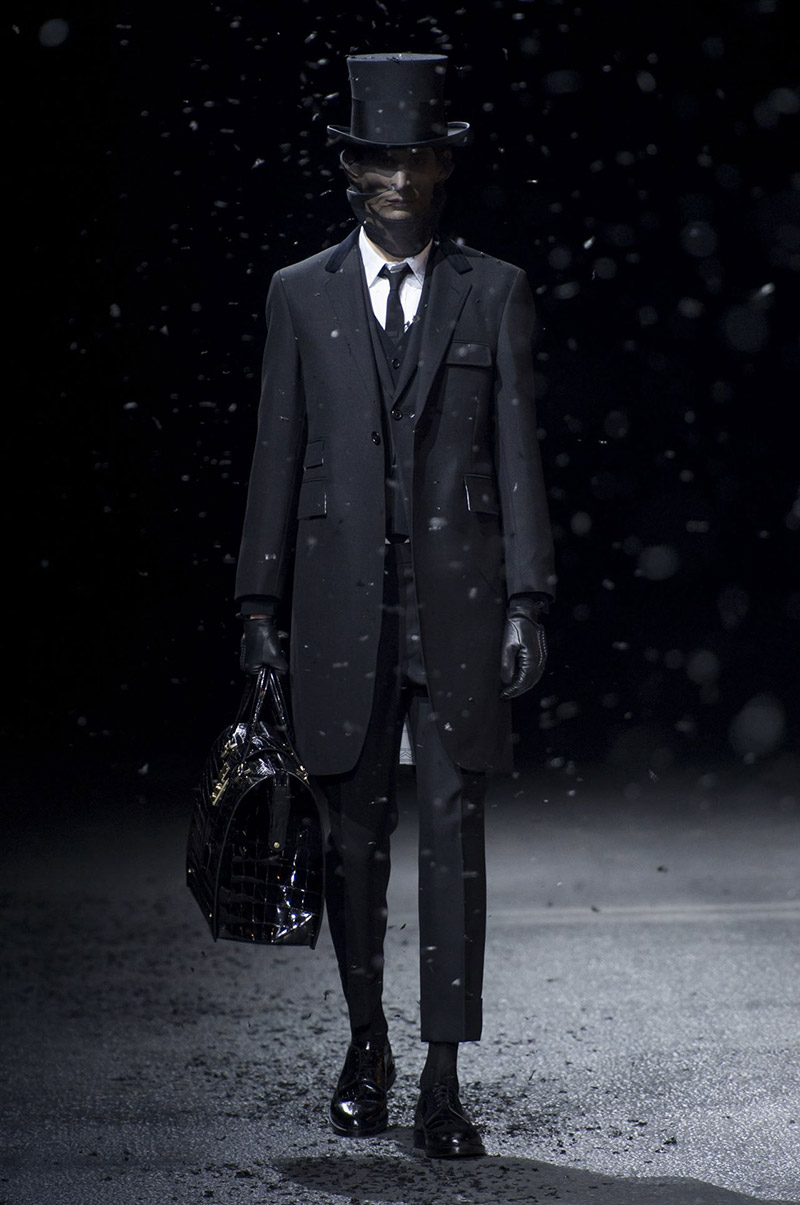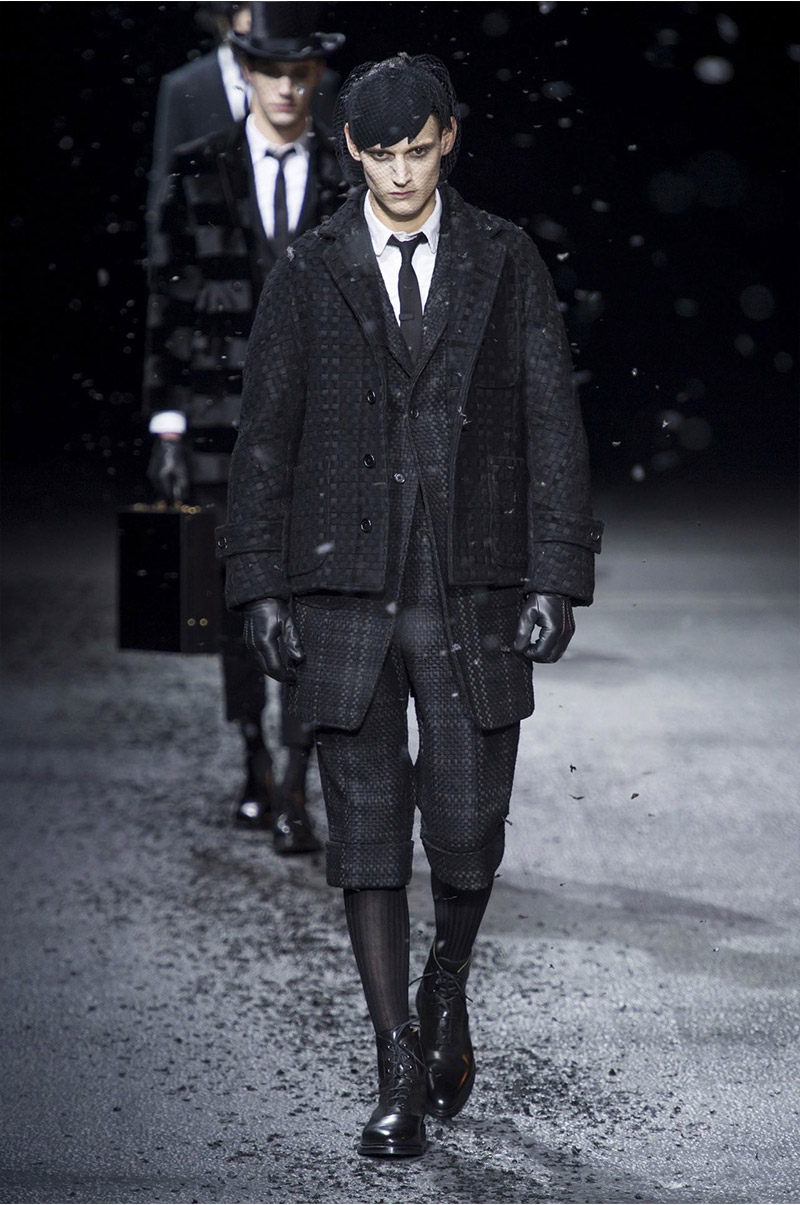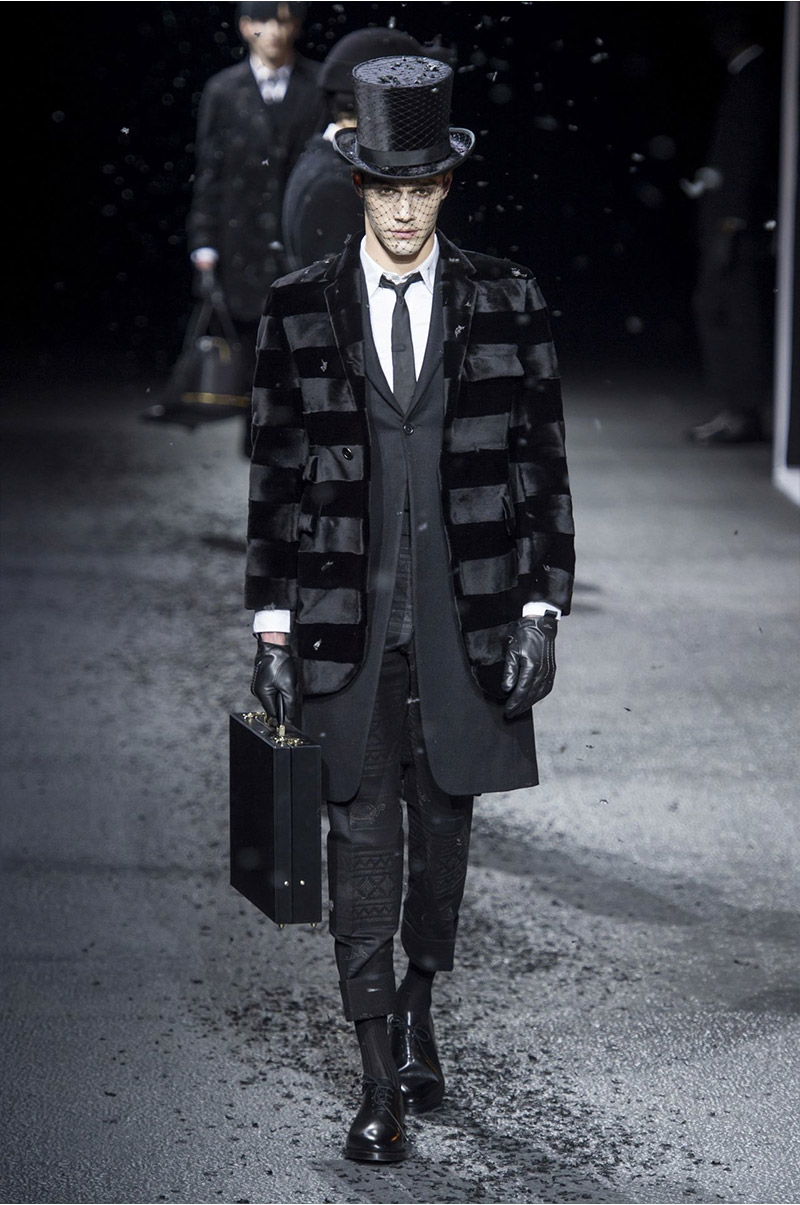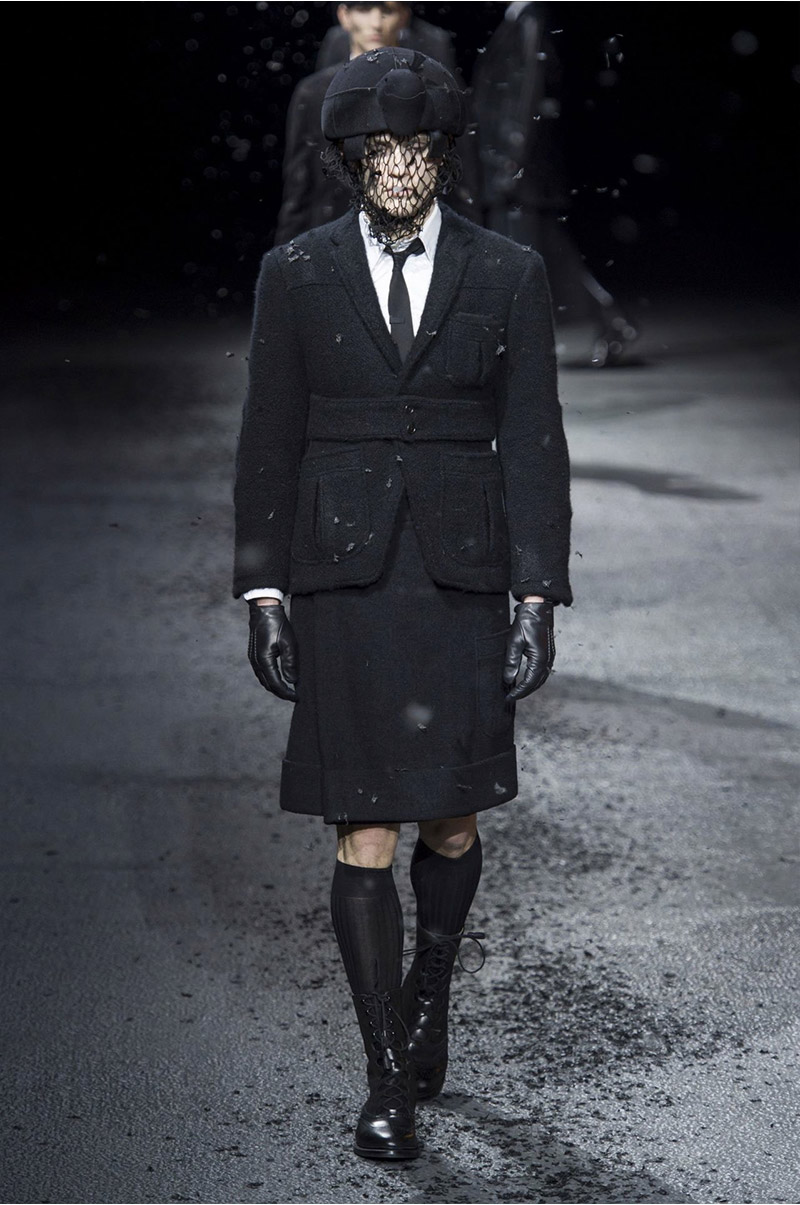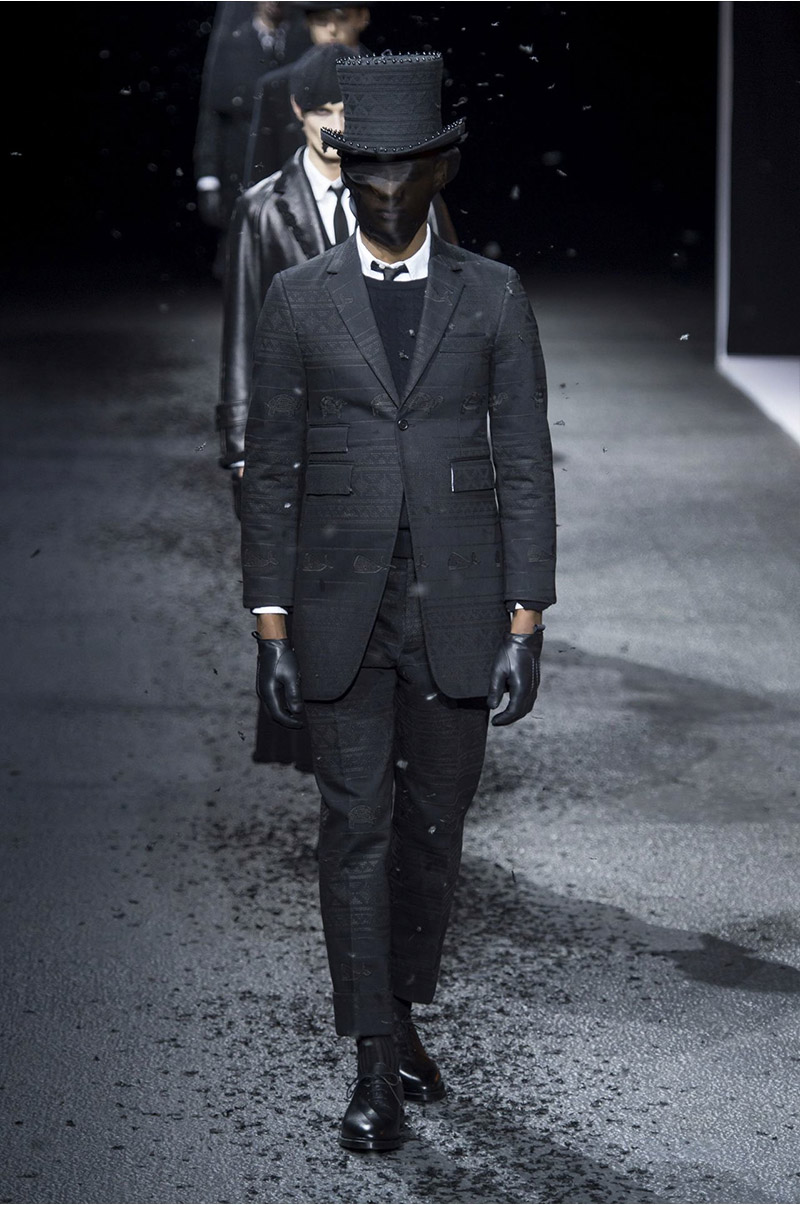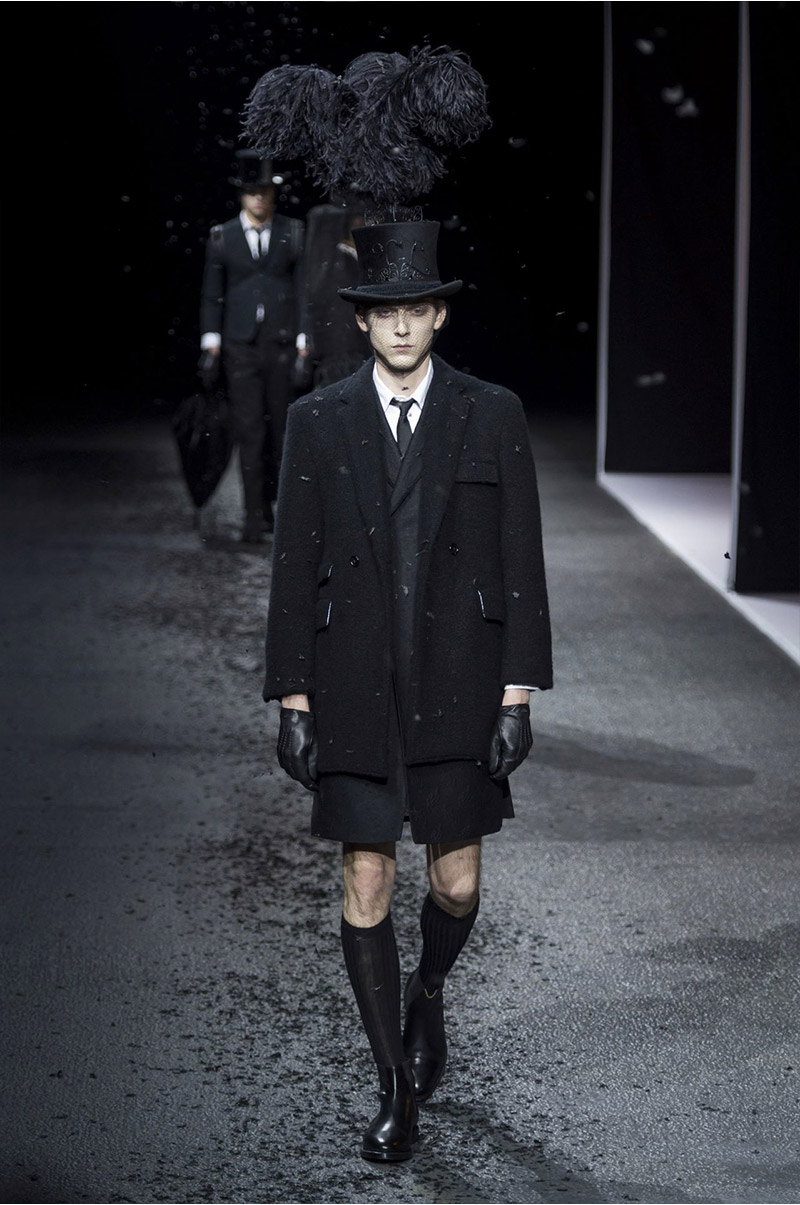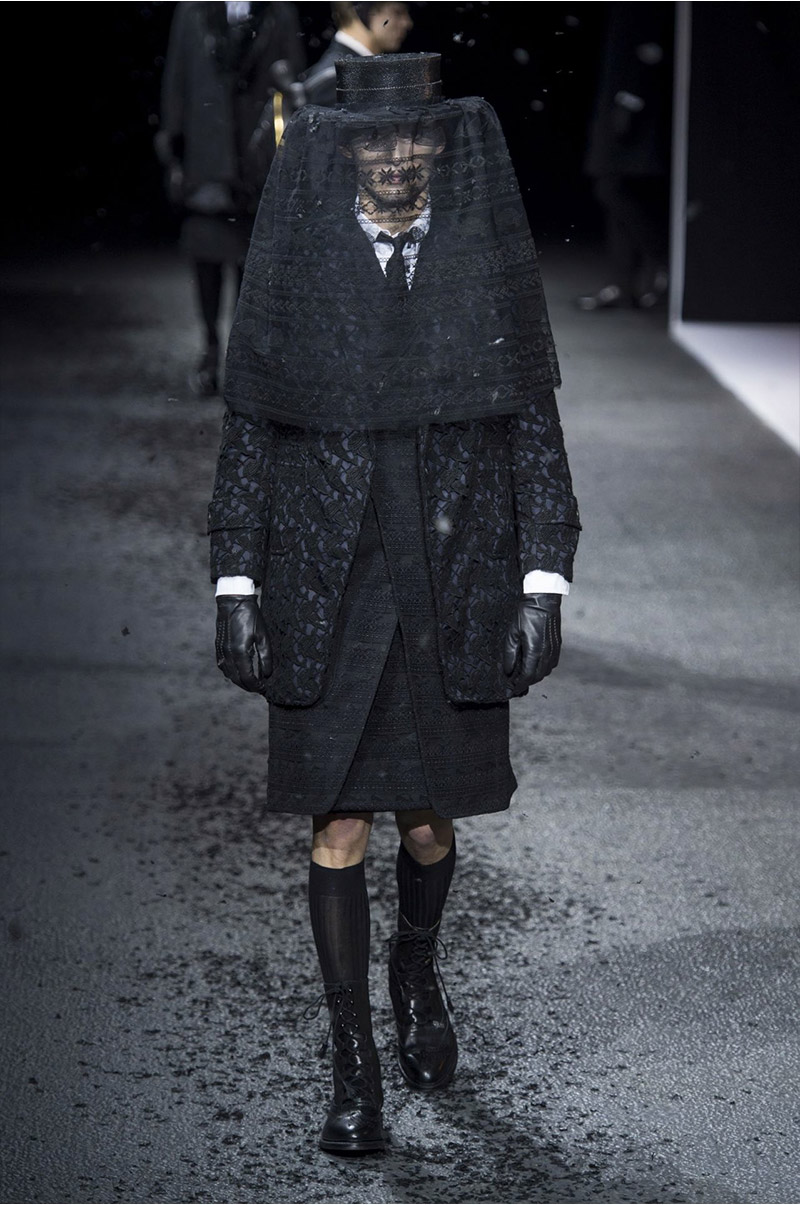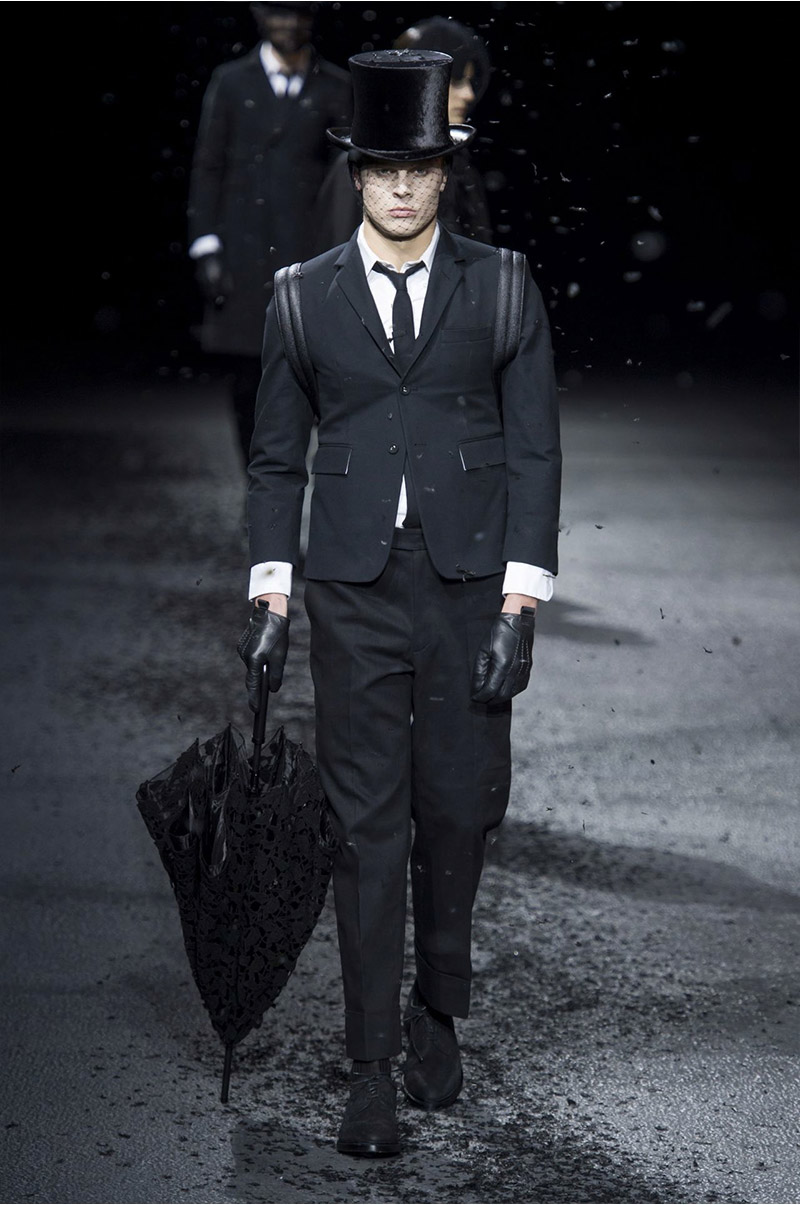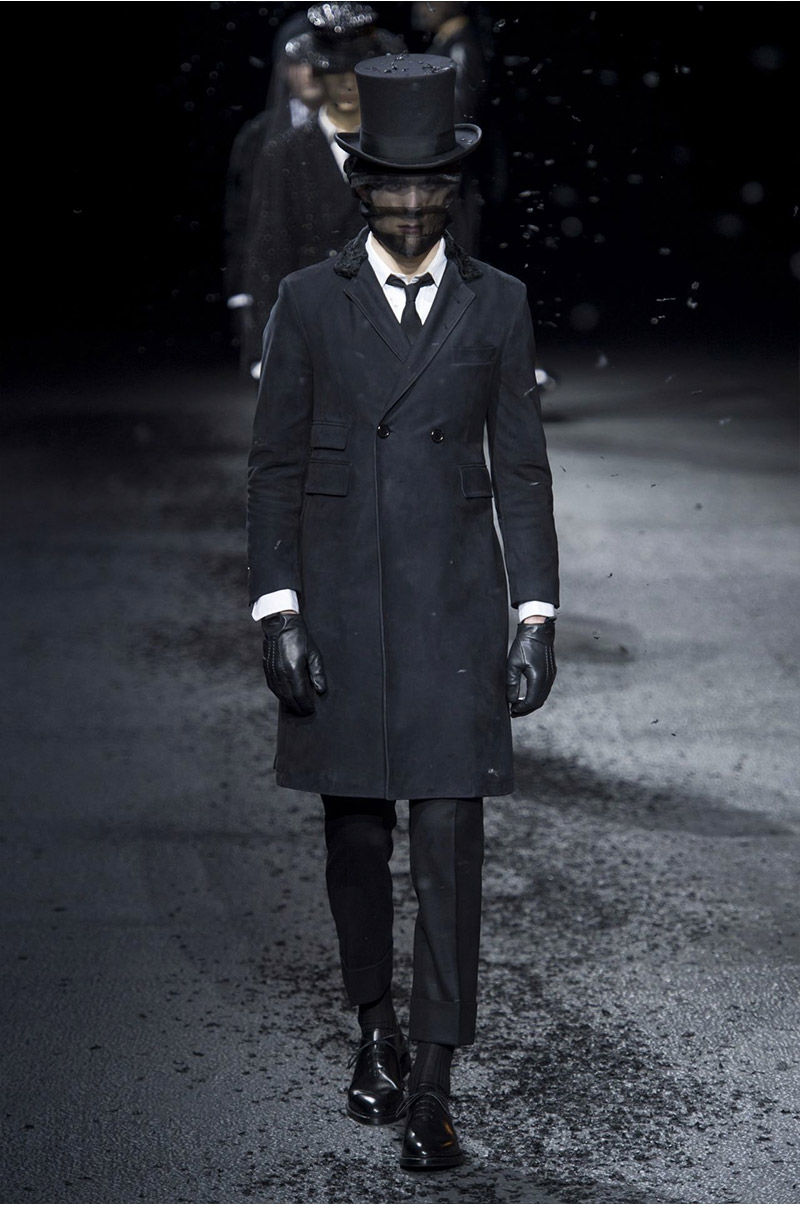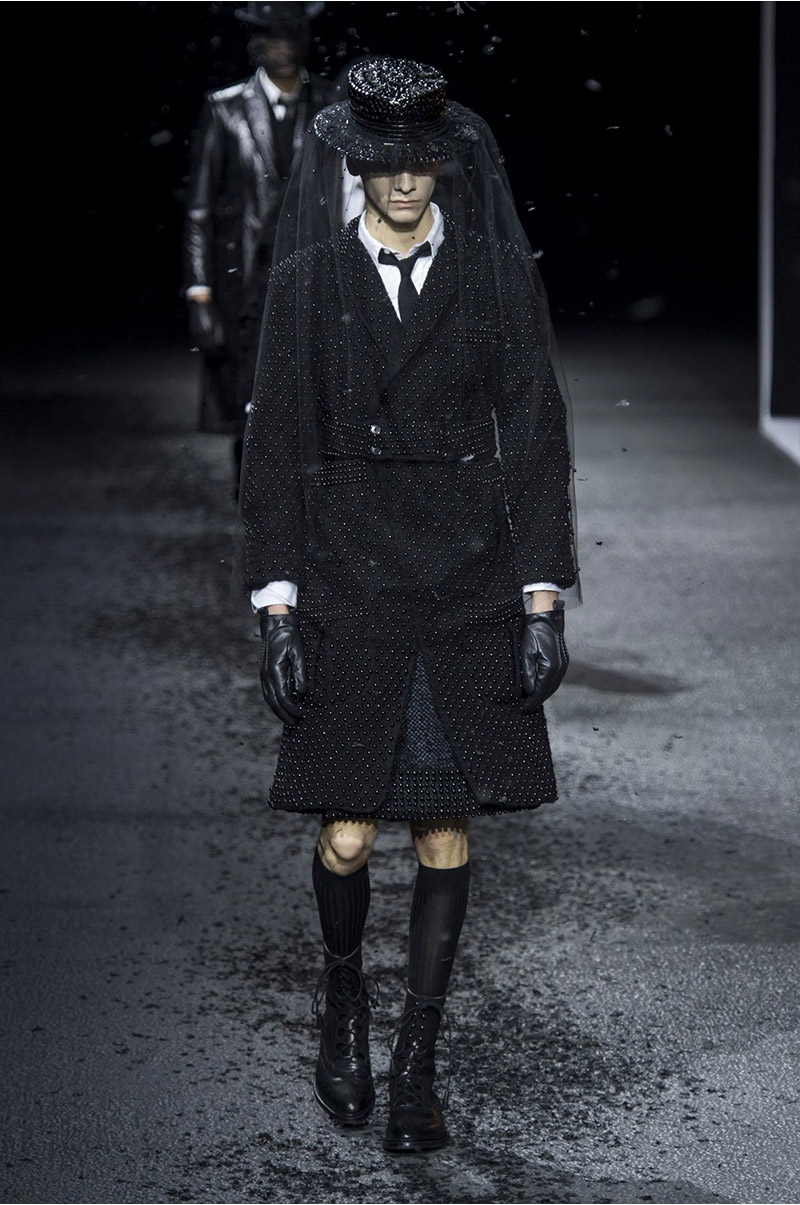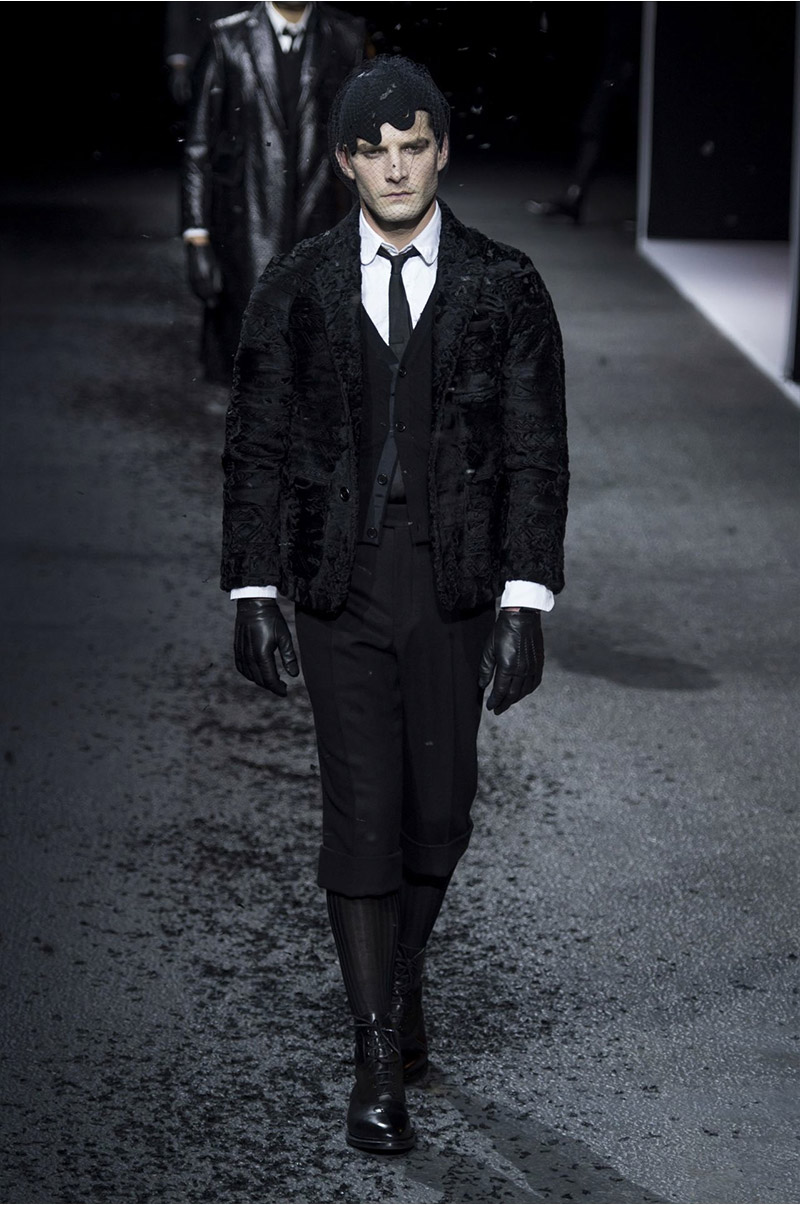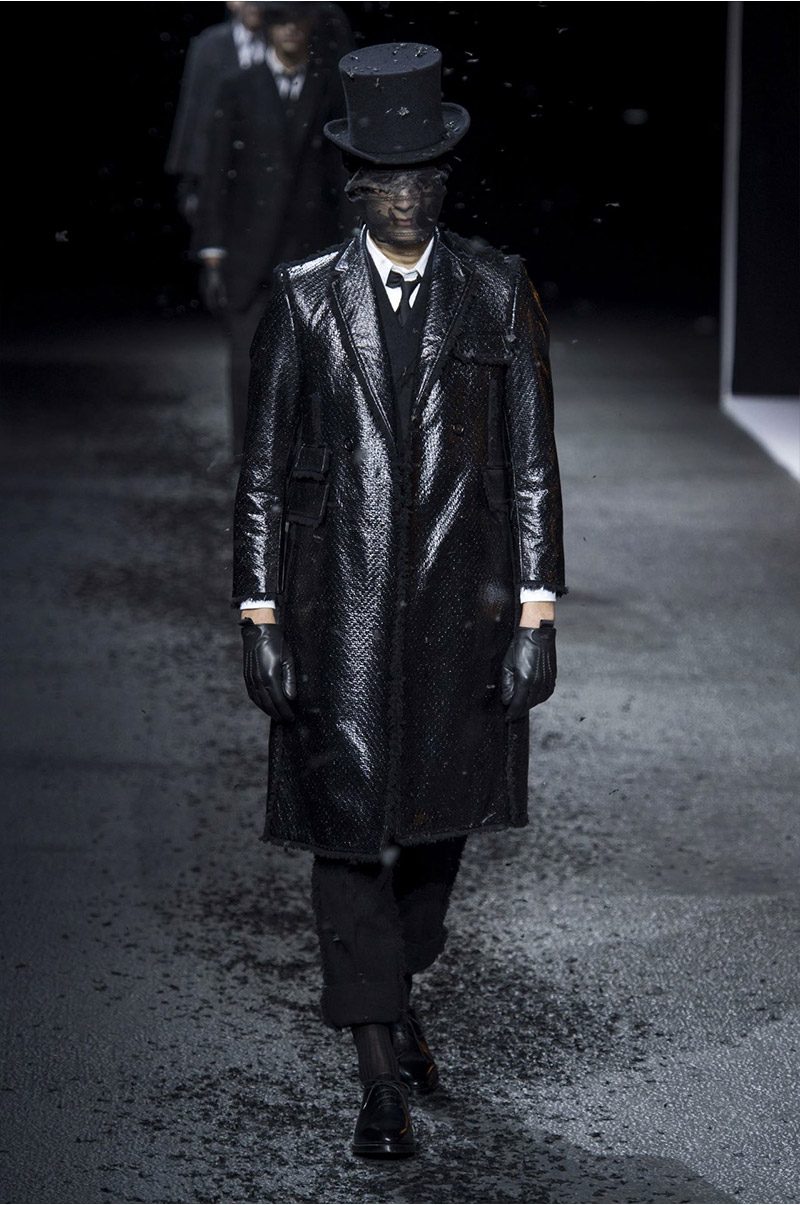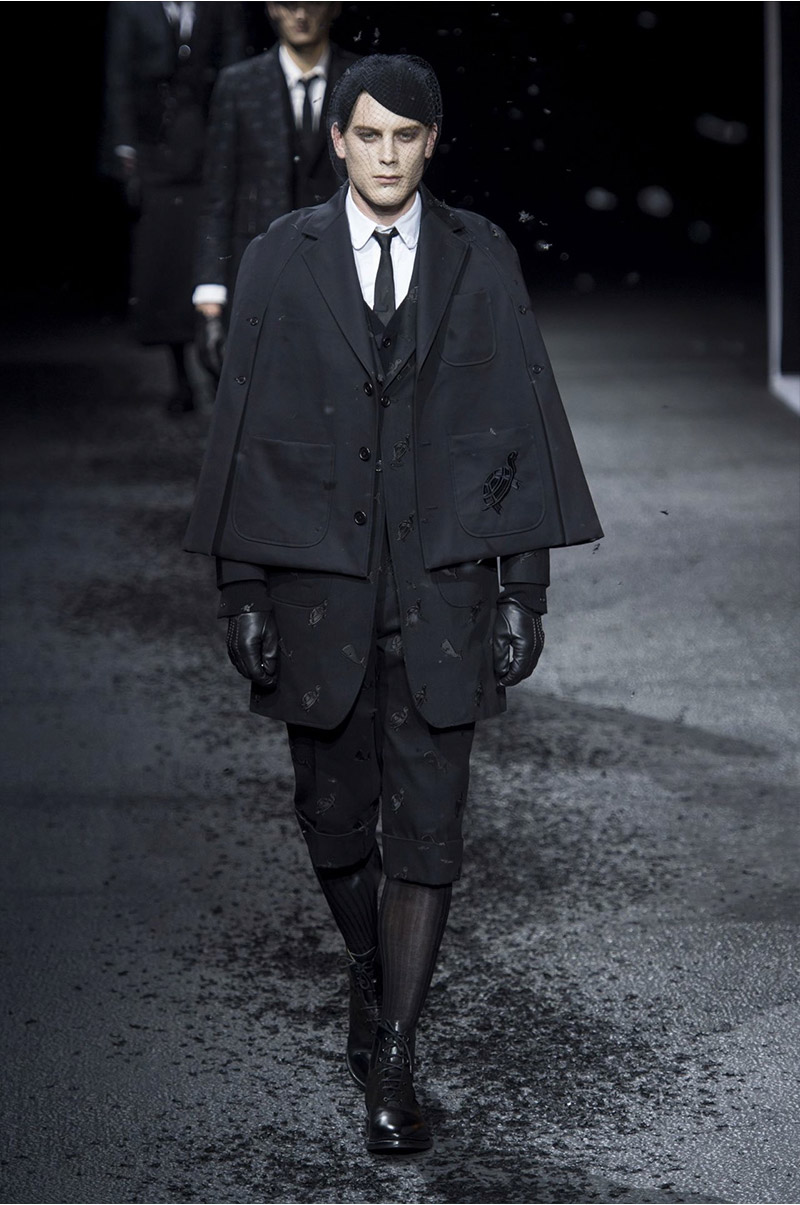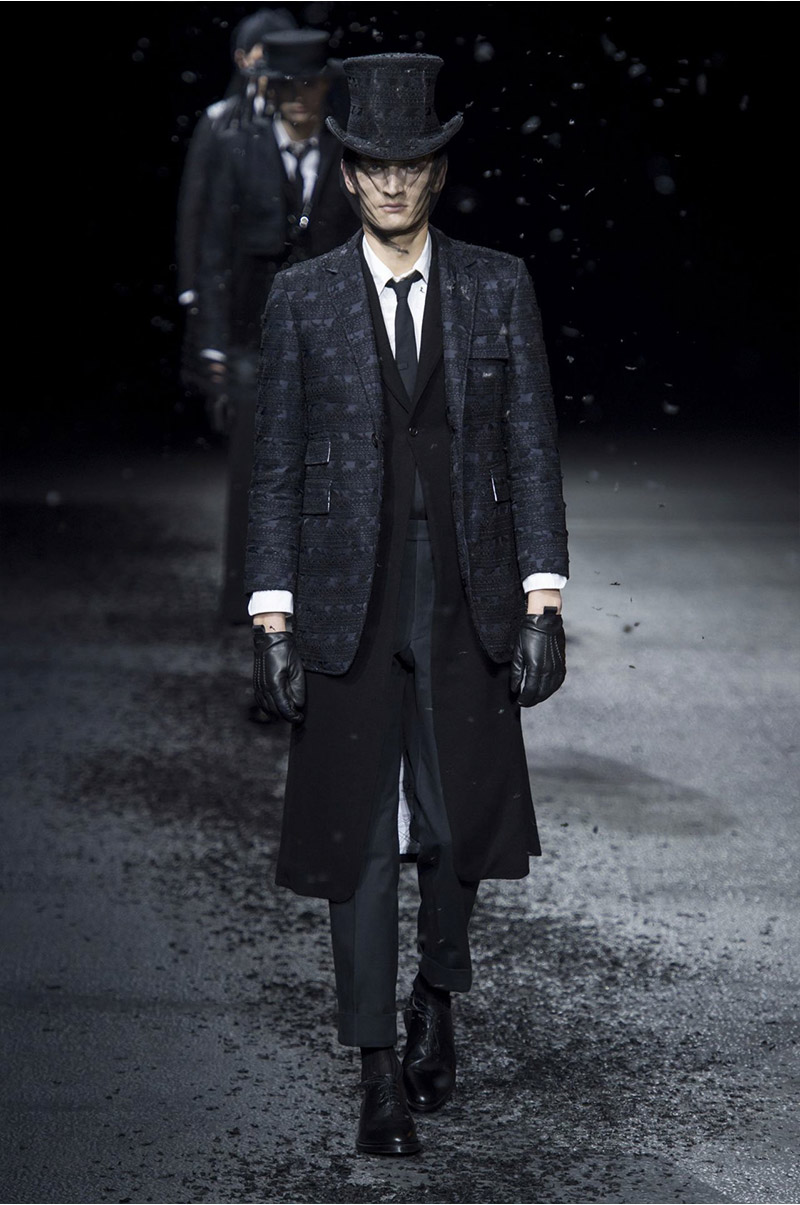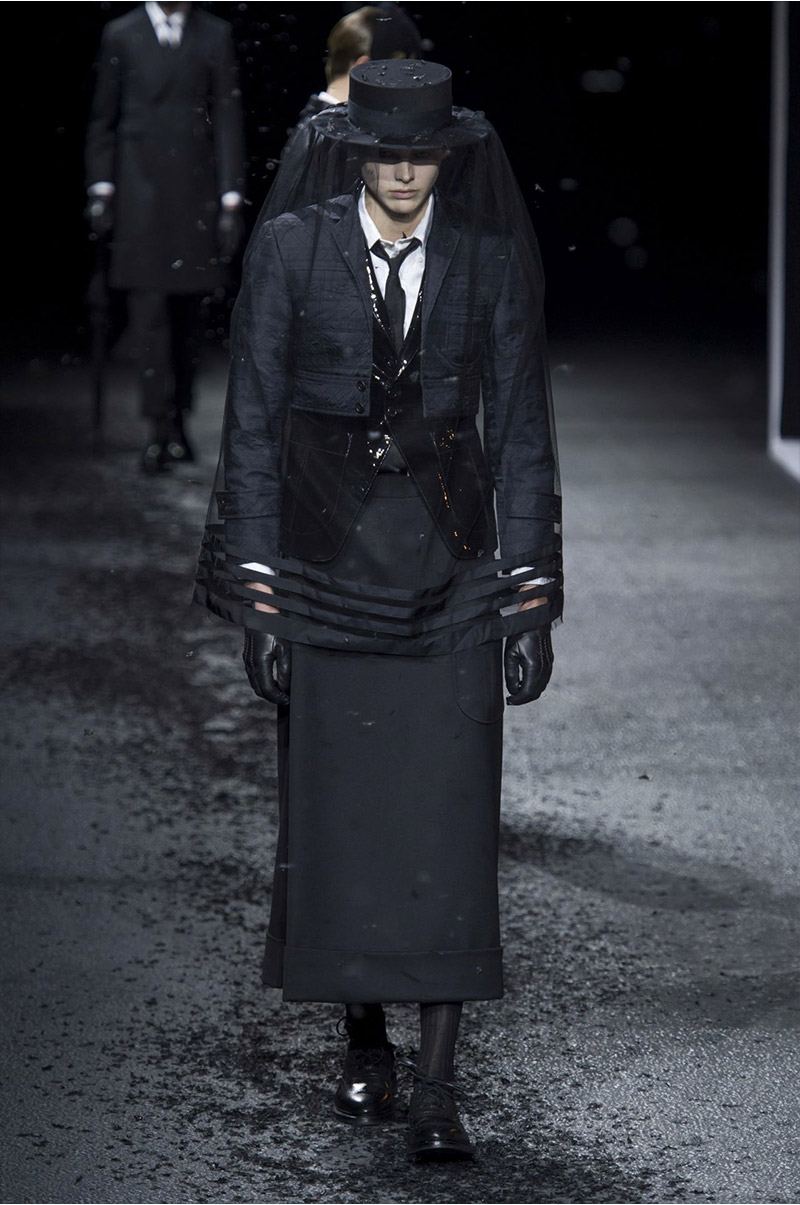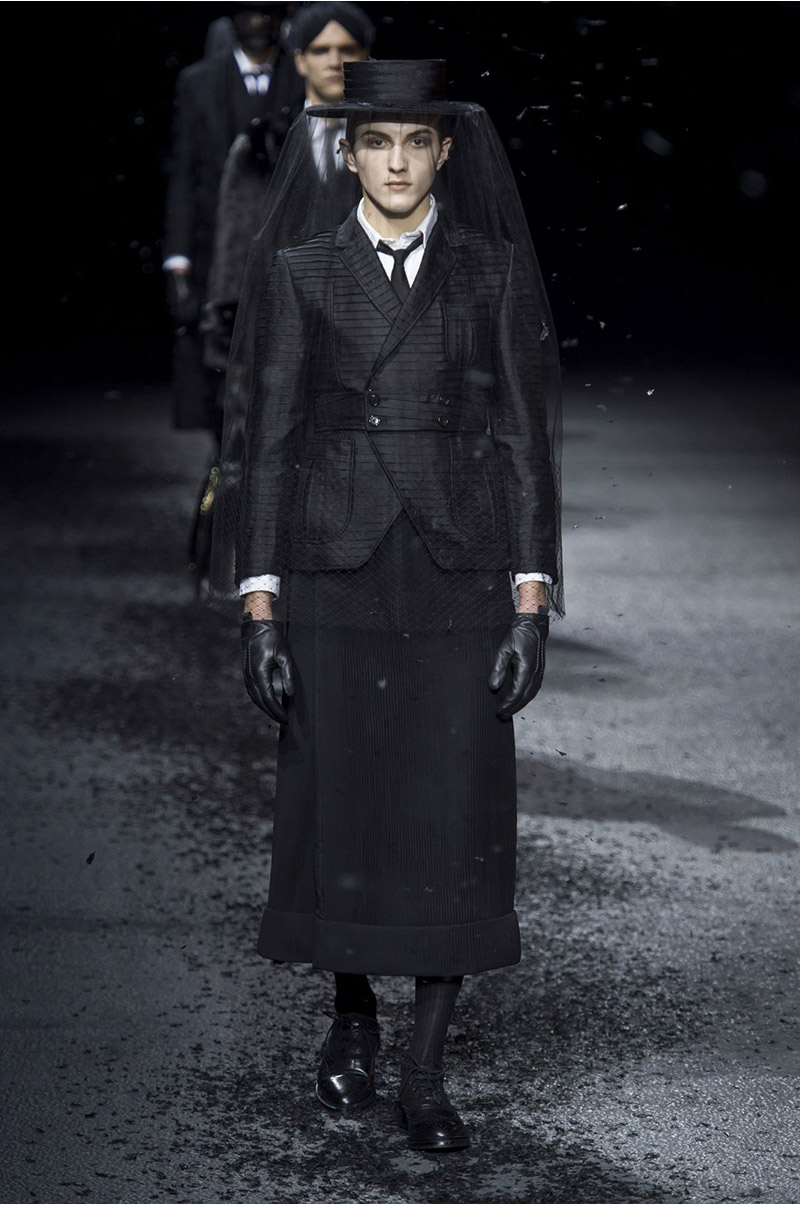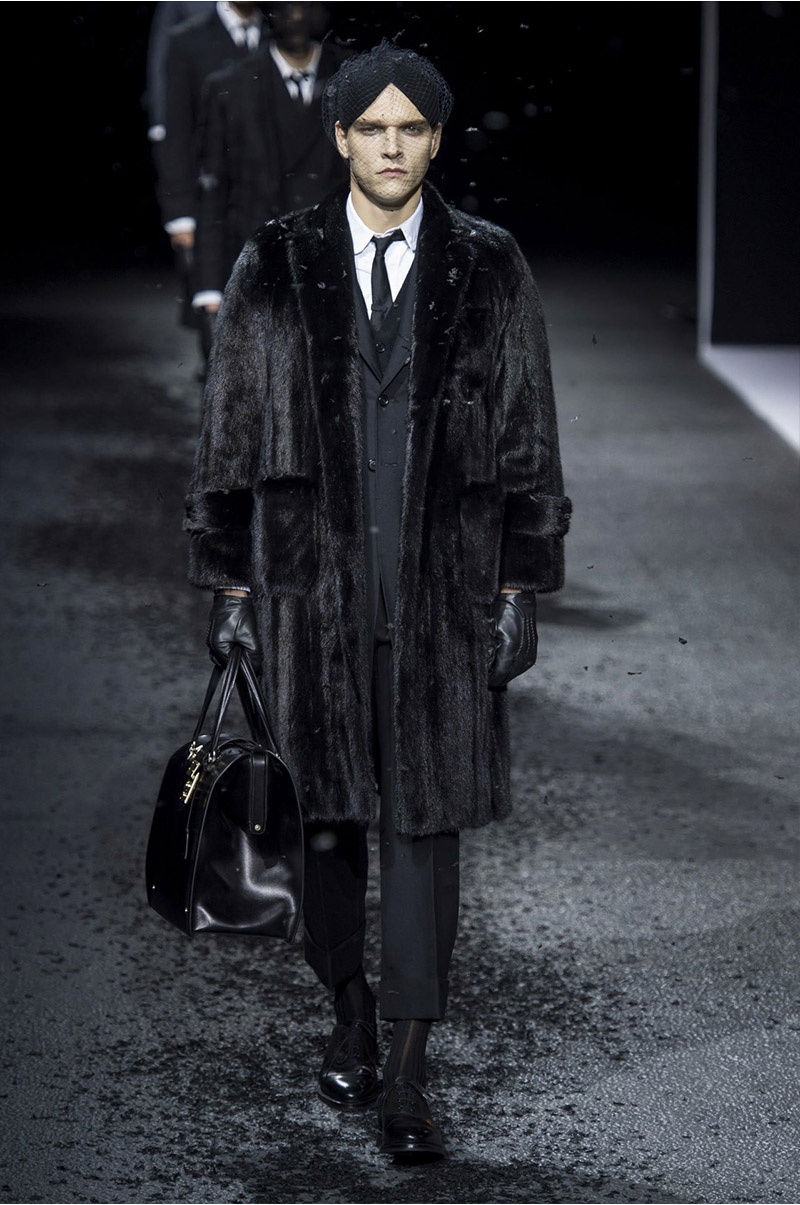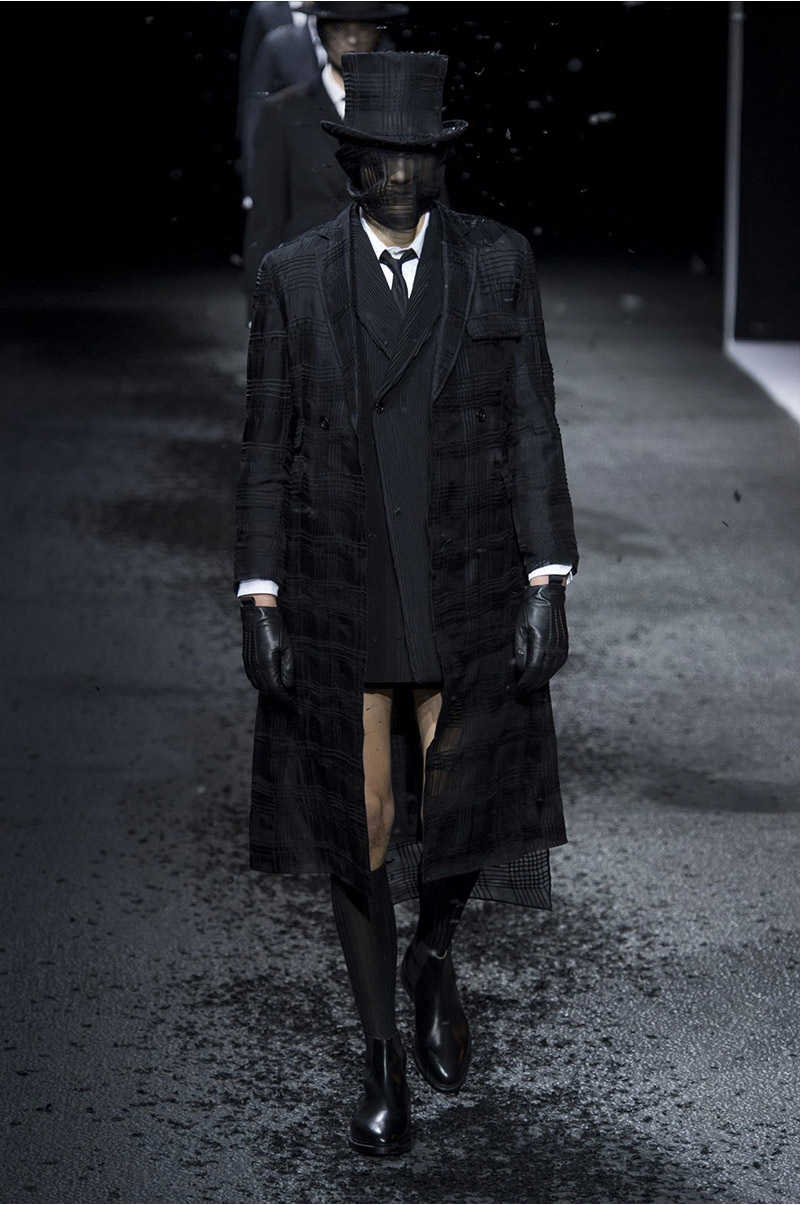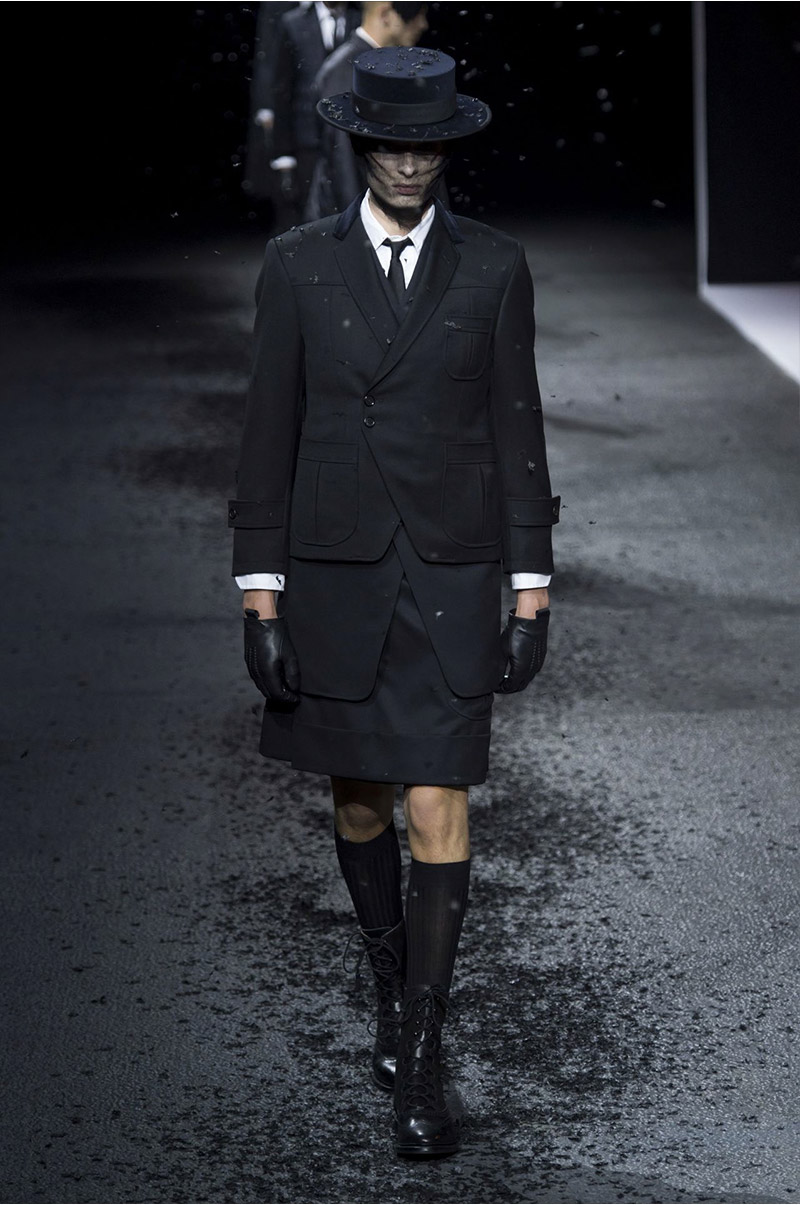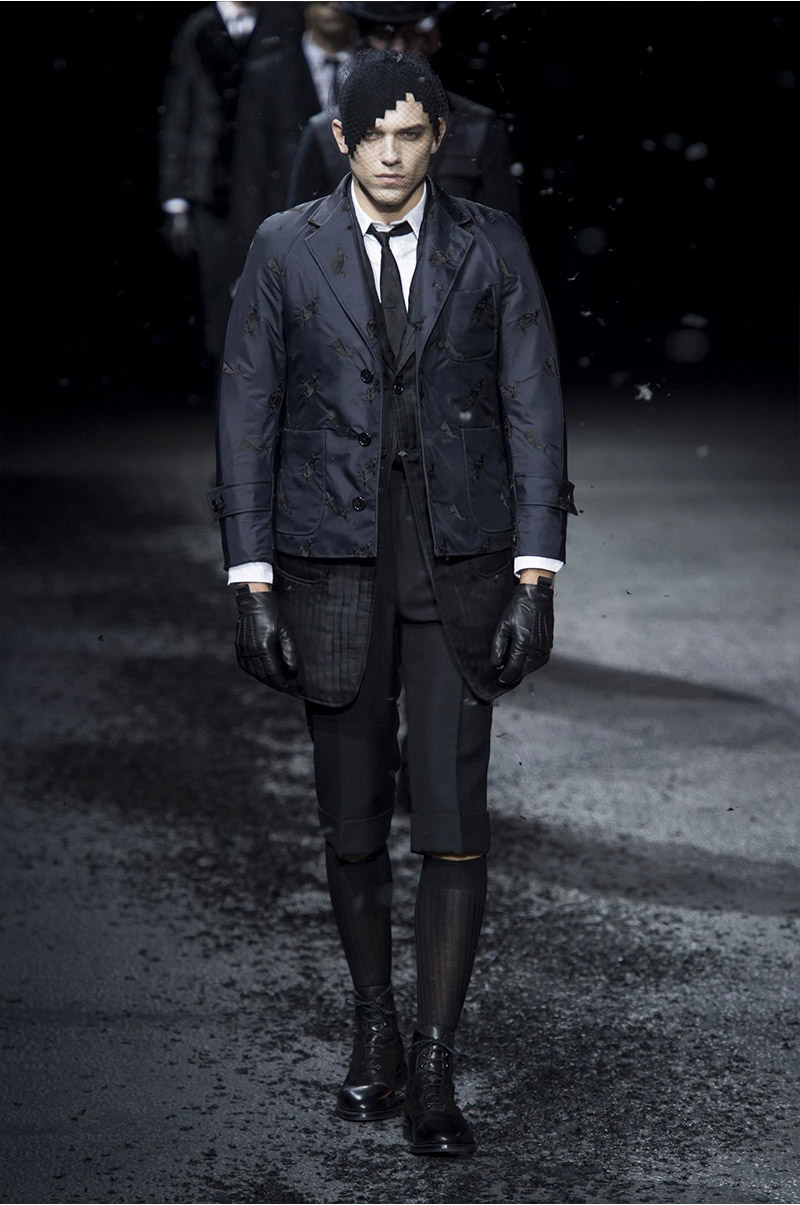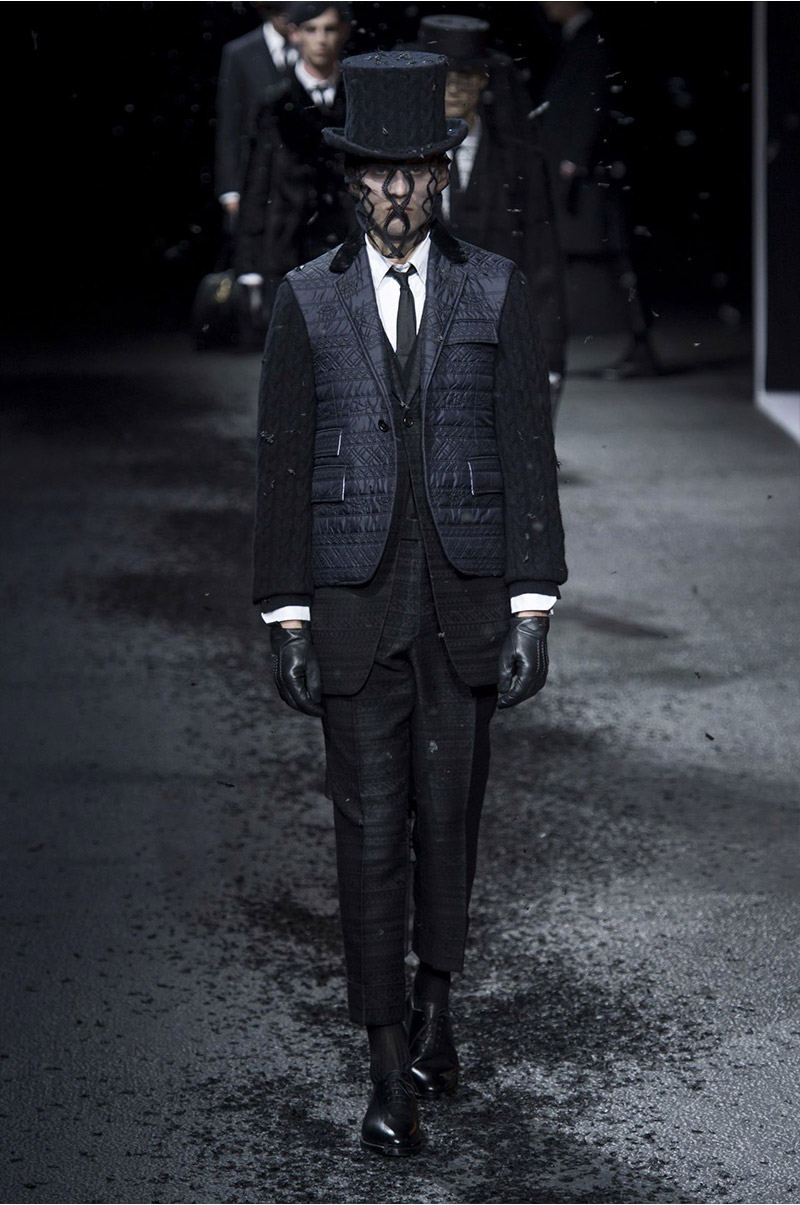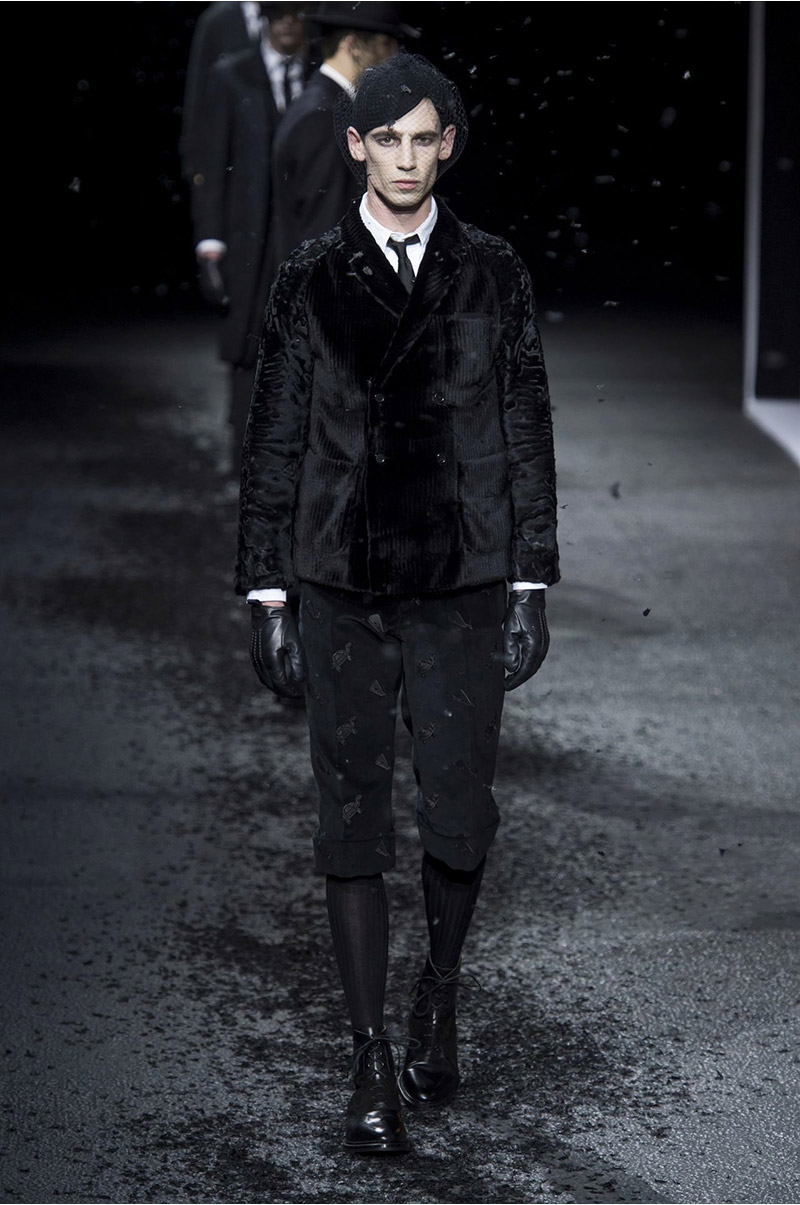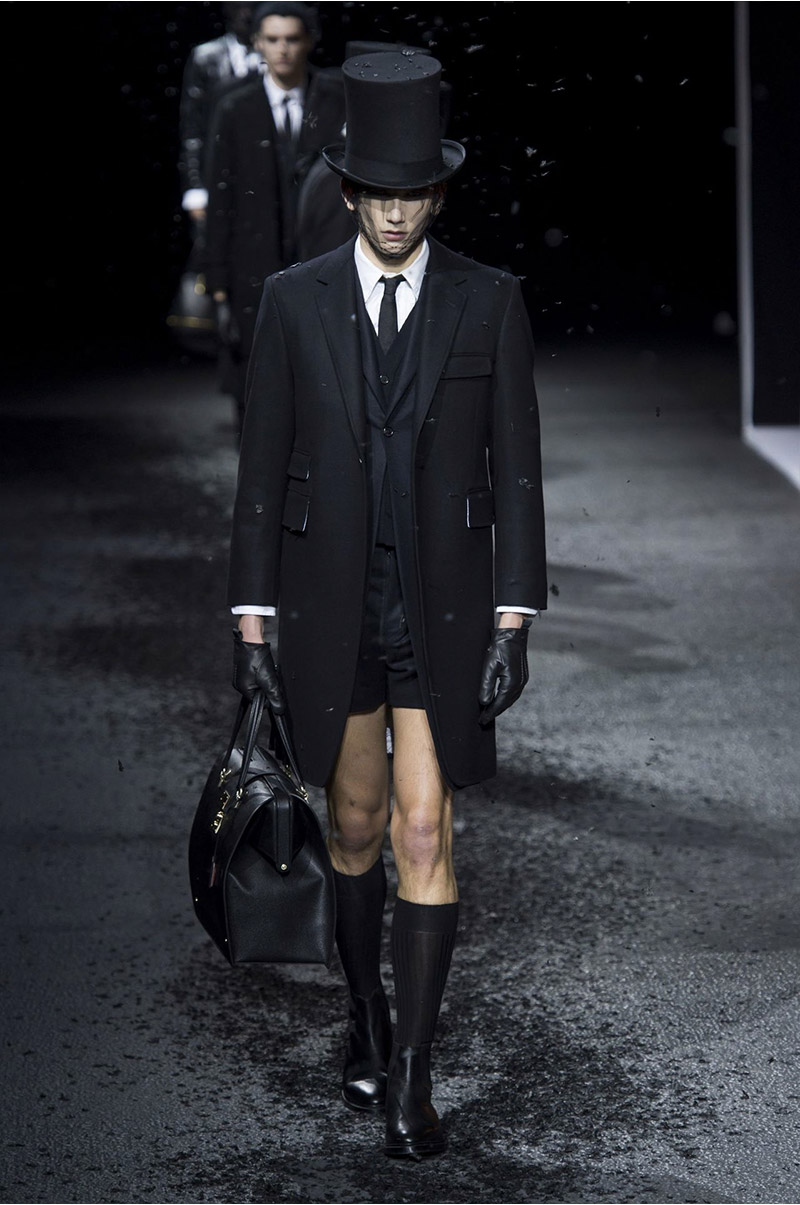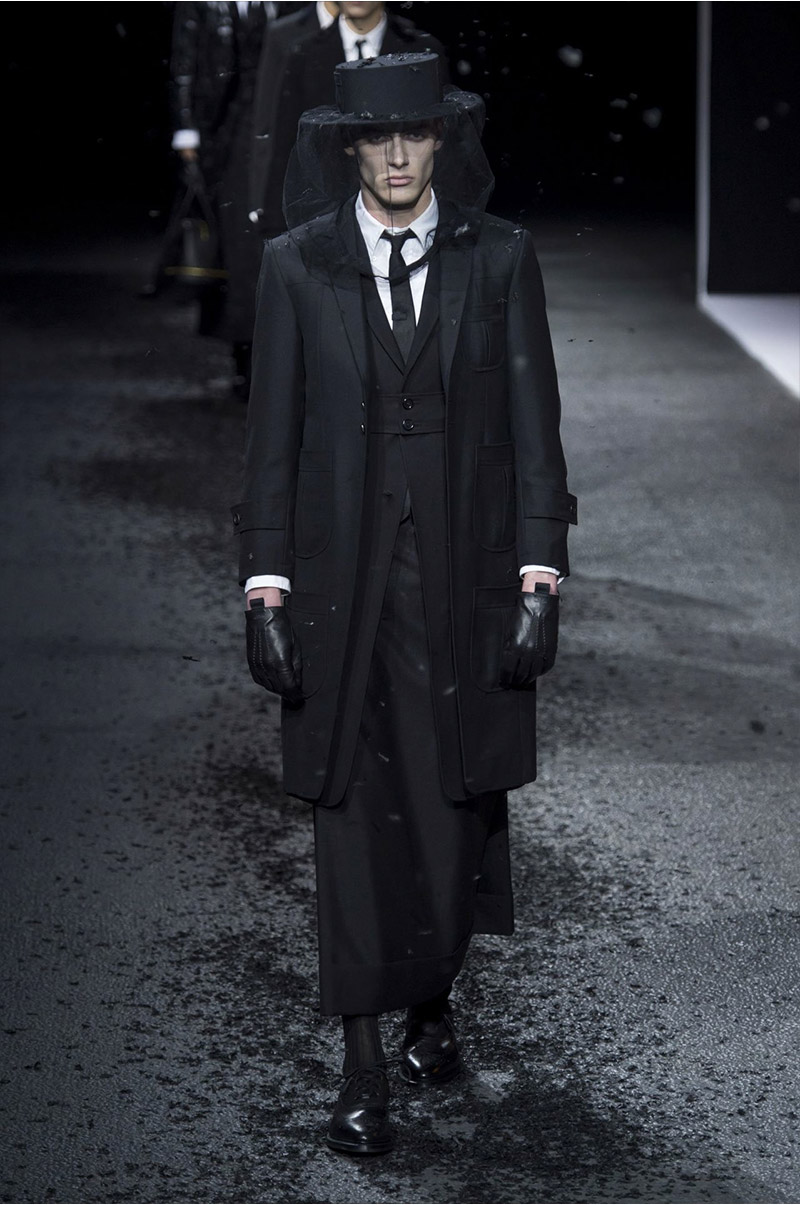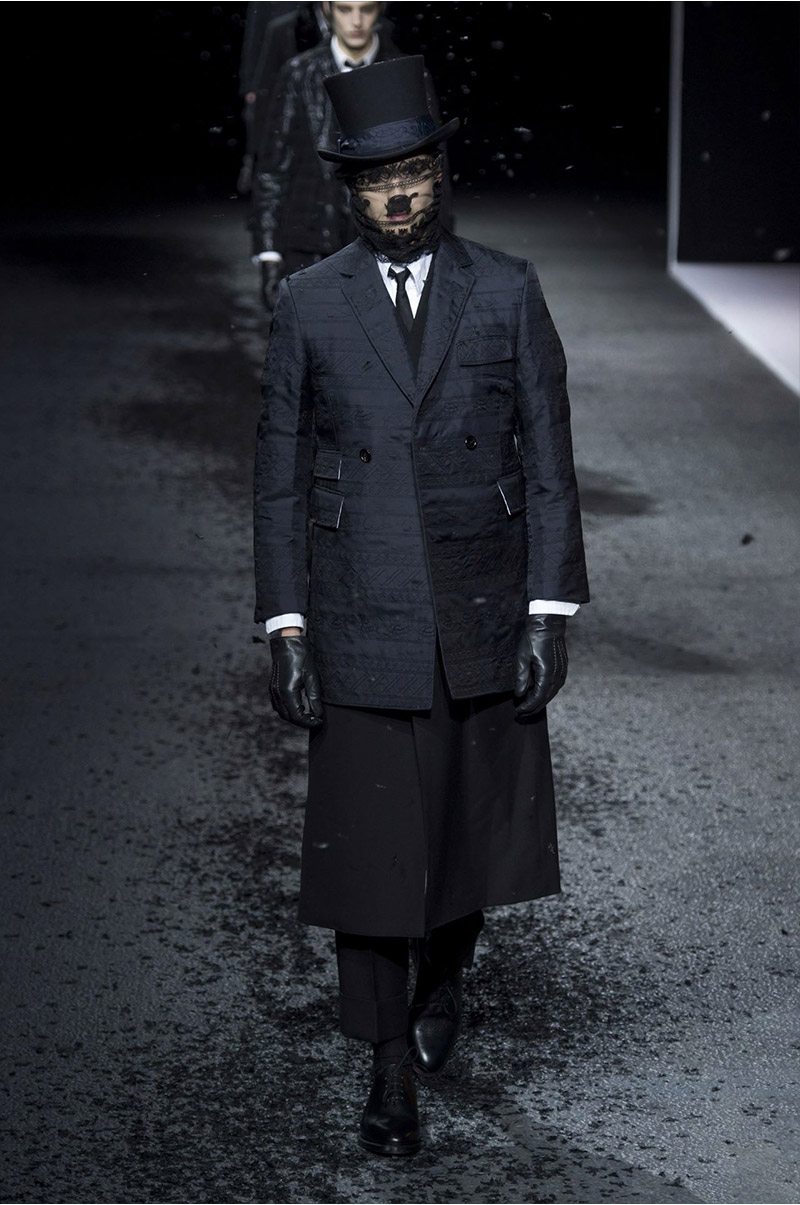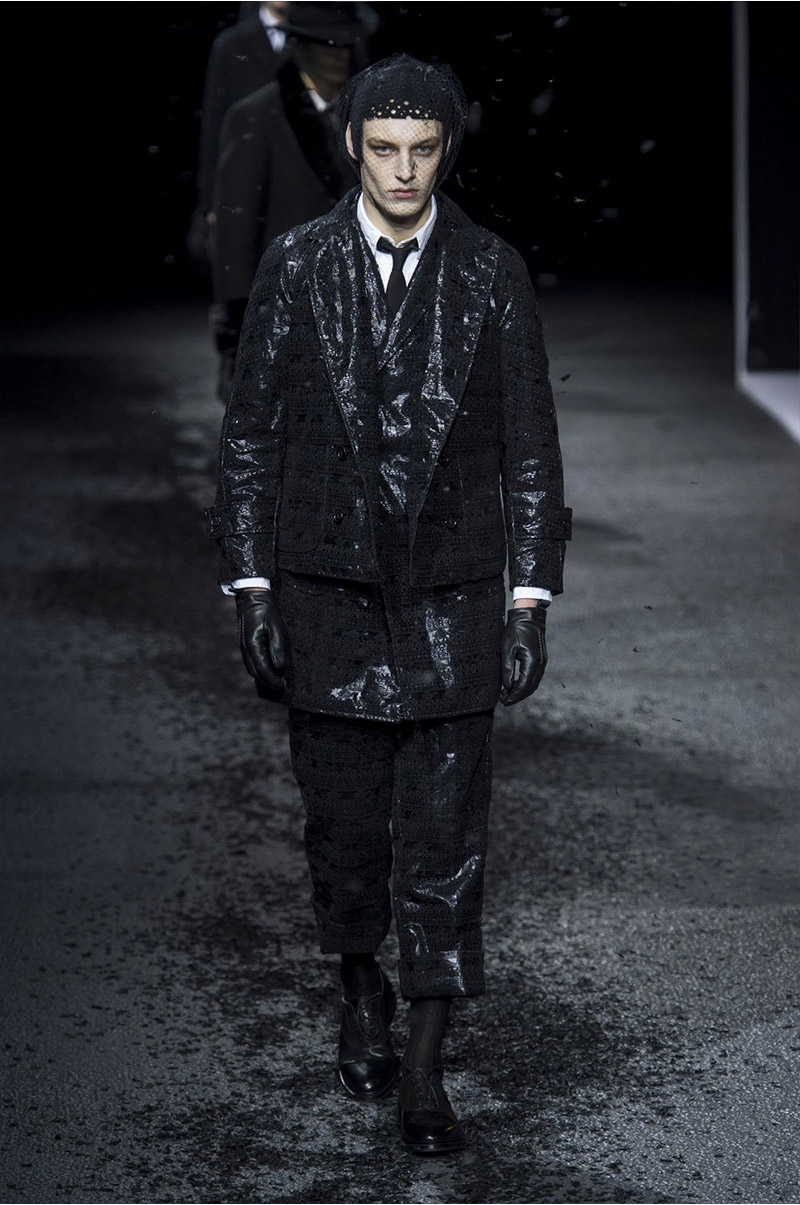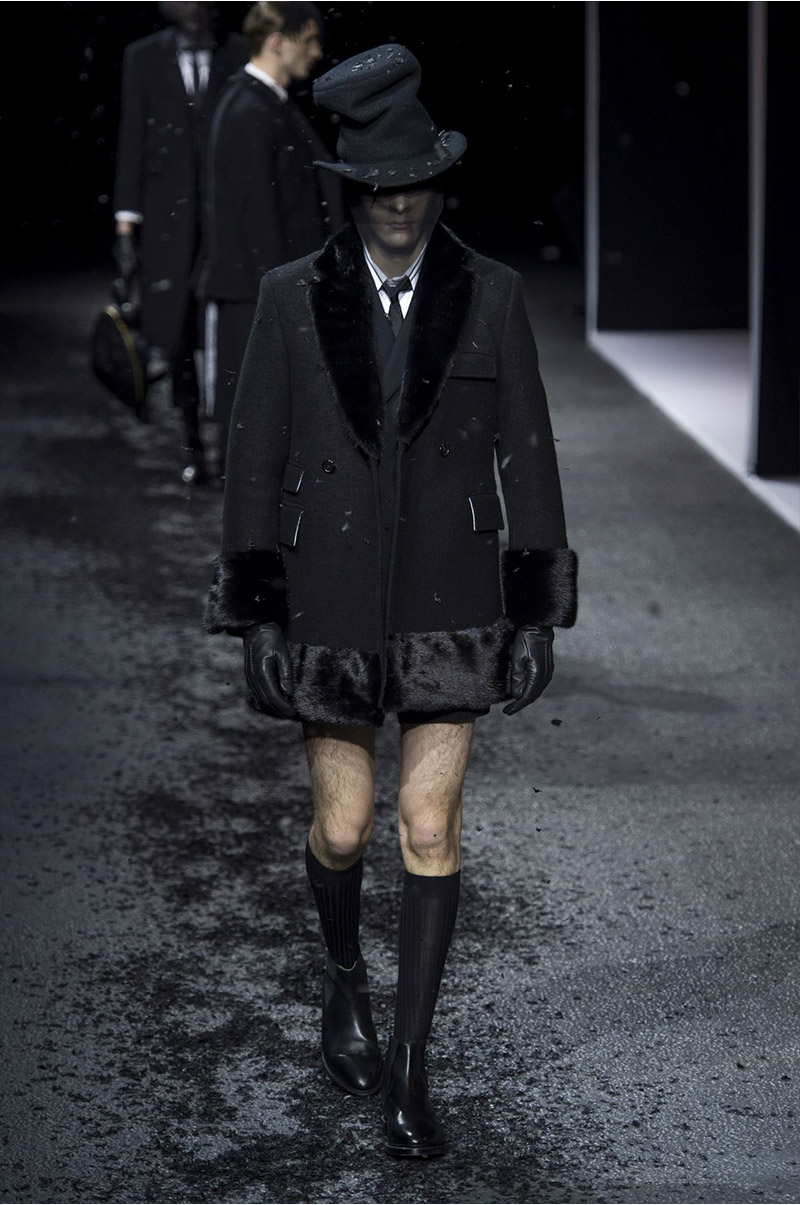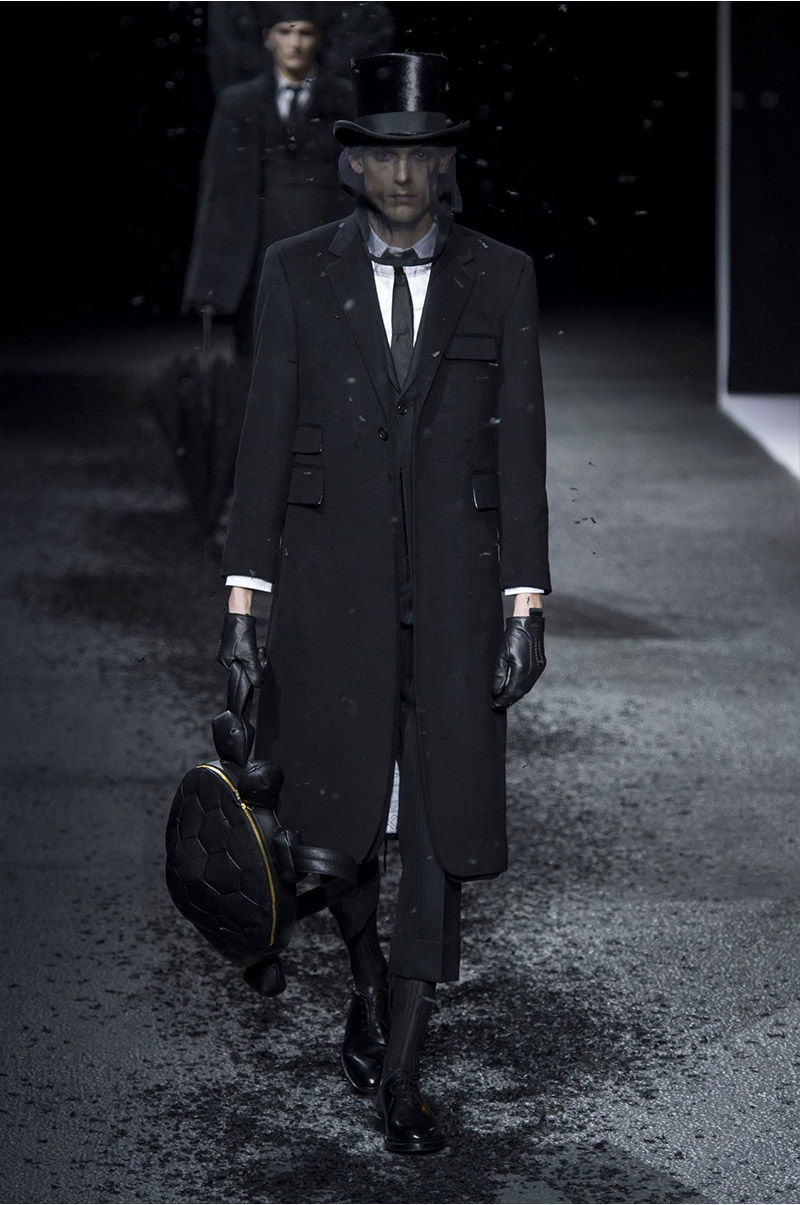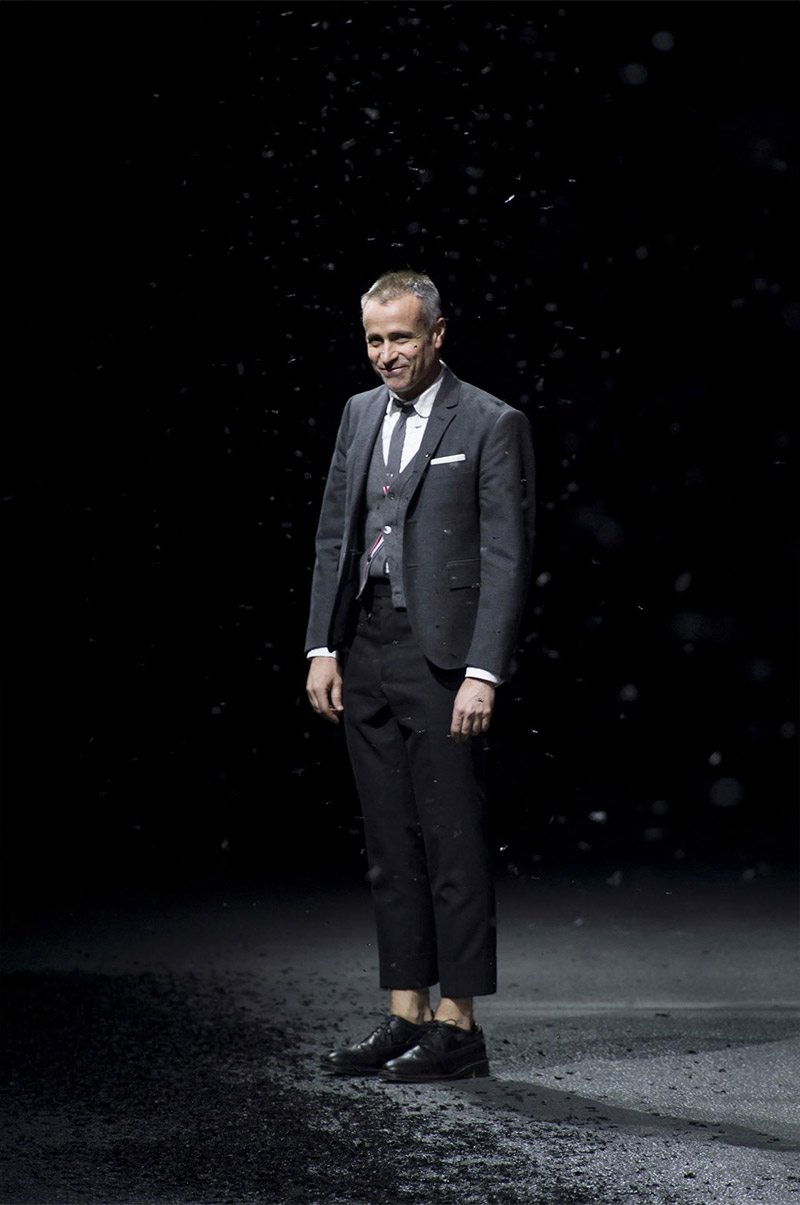Next week, the Costume Institute at the Metropolitan Museum in New York shuts down its current exhibition, Death Becomes Her: A Century of Mourning Attire. After Thom Browne read about the show, he wouldn't let himself see it. The title was inspiration enough. And he didn't want anyone from his atelier to go, either—no preconceptions as they all approached the new collection.
For Browne, the concept of mourning conveyed something beautiful, romantic, rich. "I had a notion of how there is respect for people who have passed," he said after tonight's theatrical performance. So he came up with a scenario about a character named Michael, a self-contained individual who lives and dies in complete harmony with himself, and is then honored in death by his friends and relatives.
Bizarre? Macabre? This was a Thom Browne show. How could we expect anything more or less? We watched patiently as a white-clad Michael (best imagine him played by Anthony Perkins) rose from his bed, went about a minimal routine—suggestive, at least to this mind, of preparation for suicide—changed into a black suit, converted his pristine white surroundings to black, reversing even his pillow and duvet, then got back into bed…and died. Now the mourners arrived: the lawyer, the doctor, the siblings, the ex-lovers, the dowager aunts, the undertakers—who knows how many more? Handel's Sarabande provided a mournful soundtrack. Fashion's ADD pulse slowed to a standstill. Did I mention patience?
It's true that death inspired reactions different to our own in the not-so-distant past. It was that spirit that Browne sought. "I didn't want it to be sad, or too deep," he said. That's why preppy icons—the whale, the turtle—appeared to leaven the funereal proceedings. And, this being a fashion show after all, there were plenty of clothes that had applications above and beyond the morbid tableau unfolding in front of us. A black leather car coat? A fur-trimmed peacoat? An exceptionally glamorous jacket in what looked like glazed python? There was also Browne's customary, exhaustive catalog of jacket and coat options, in an ingenious combination of masculine and feminine fabrics. The fact that they were all shown in black undoubtedly would have enhanced our appreciation of their cuts if we hadn't been so distanced from them.
There is surely significance in the fact that Rei Kawakubo and Thom Browne opted for such ceremonial presentations in the same season (and Walter Van Beirendonck and Craig Green, come to think of it). If fashion is a mirror, it has, overall, been dark throughout the European menswear shows, reflecting the world in which the shows have been taking place. The fact that Browne all but brought the calendar to a close in Paris with a funeral made the point even stronger. As usual, he contested the suggestion of a bigger picture. Romance, richness—these were his tentpoles. But he closed his show with a rain of black ash.
















